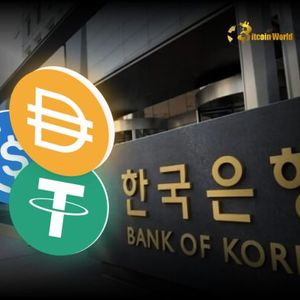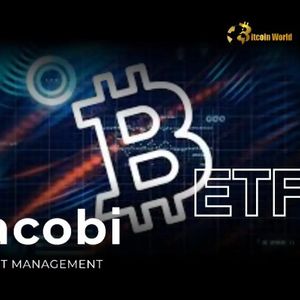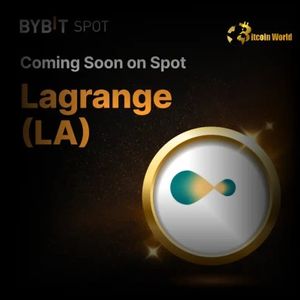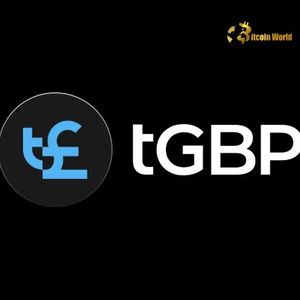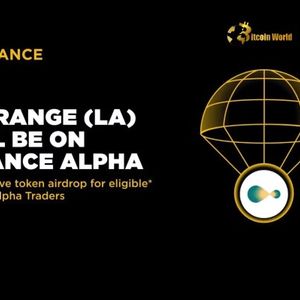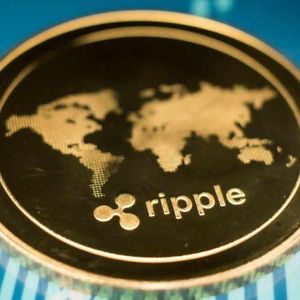BitcoinWorld Urgent Warning: Bank of Korea Governor Cautions on Non-Bank Stablecoin Issuance The world of digital finance is constantly evolving, bringing both innovation and complex regulatory challenges. A key area of focus for financial authorities globally is the rise of stablecoins – cryptocurrencies designed to maintain a stable value, often pegged to traditional currencies like the US dollar or the Korean won. Recently, the conversation around stablecoin regulation in South Korea has intensified, particularly concerning who should be allowed to issue these digital assets. This is where the Bank of Korea steps in, offering a cautious perspective that warrants close examination. Why is the Bank of Korea Concerned About Non-Bank Stablecoin Issuance? Bank of Korea (BOK) Governor Rhee Chang-yong has voiced significant reservations regarding the potential for non-bank institutions to issue Korean won stablecoin . According to reports from Yonhap News, the primary concern revolves around the potential circumvention of existing capital regulations. Capital regulations are fundamental rules designed to ensure financial institutions hold sufficient capital reserves to absorb losses and remain solvent, protecting depositors and maintaining financial stability. Governor Rhee’s point is that allowing entities outside the traditional banking system to issue assets like stablecoins, which function similarly to money, could create loopholes in these crucial regulations. He emphasized that South Korean authorities must undertake a thorough assessment before making any decisions. This assessment should consider various scenarios: Limiting the issuance of won-denominated stablecoins exclusively to licensed banks. Extending the ability to issue these stablecoins to qualified non-bank institutions. The core question regulators must answer, according to Rhee, is whether permitting non-bank entities access to the stablecoin payments sector might allow them to bypass or undermine the established capital rules designed for financial stability. This cautious approach highlights the central bank’s focus on maintaining the integrity of the financial system amidst technological advancements. Understanding Stablecoins and Regulatory Challenges Stablecoins are a unique class of cryptocurrency. Unlike volatile assets like Bitcoin or Ethereum, their value is typically pegged to a more stable asset, such as fiat currency, commodities, or even other cryptocurrencies, often held in reserve. The idea is to combine the benefits of blockchain technology (speed, efficiency, transparency) with the stability of traditional money. However, their increasing popularity and potential use in payments and transfers raise significant regulatory questions. These questions include: Financial Stability: If a stablecoin issuer fails, what happens to the peg and the users’ funds? Are the reserves truly sufficient and segregated? Consumer Protection: Are users adequately protected from fraud, mismanagement, or loss of funds? Anti-Money Laundering (AML) / Counter-Terrorist Financing (CTF): How can stablecoin transactions be monitored and regulated to prevent illicit activities? Monetary Policy: Could widespread adoption of private stablecoins impact a central bank’s ability to manage the money supply and interest rates? Regulatory Arbitrage: Could non-bank issuers operate with less stringent oversight than banks, creating unfair advantages and systemic risks? The BOK Governor’s comments specifically address the last point – the risk of regulatory arbitrage and circumvention of capital requirements by non-bank stablecoin issuers. Why Would Non-Banks Want to Issue Won Stablecoins? Non-bank financial institutions, fintech companies, and even large tech firms might be interested in issuing their own won stablecoin for several reasons: Efficiency and Cost Reduction: Stablecoins can potentially facilitate faster and cheaper payments and transfers compared to traditional systems. Building Ecosystems: A stablecoin can power transactions within a company’s own platform or network (e.g., for e-commerce, gaming, or other services). New Revenue Streams: Issuers might earn revenue from transaction fees, interest on reserves, or other related financial services. Innovation: Developing novel financial products and services built on blockchain technology. While these potential benefits exist, regulators like the Bank of Korea are tasked with balancing innovation with essential safeguards. Comparing Approaches: Banks vs. Non-Banks in Stablecoin Issuance The debate isn’t unique to South Korea. Jurisdictions worldwide are grappling with the same question. Here’s a simplified look at the potential trade-offs: Feature Bank Issuance Non-Bank Issuance Regulatory Oversight High (already subject to strict banking laws, including capital requirements) Potentially Lower (depending on licensing and framework) Financial Stability Risk Lower (backed by established, regulated entities) Higher (risk tied to the specific issuer’s solvency and regulation) Capital Requirements Already apply May need new, specific rules Innovation Potential Potentially slower due to existing infrastructure and compliance Potentially faster and more disruptive Consumer Trust Benefits from existing trust in banks Needs to build trust from scratch or rely on brand reputation Governor Rhee’s comments lean towards the view that the existing robust framework for banks provides a safer foundation for stablecoin regulation , especially concerning capital adequacy. What Does This Mean for the Future of Korean Stablecoin? The BOK Governor’s stance suggests that South Korea is likely to adopt a cautious and potentially stringent approach to non-bank stablecoin issuance. This doesn’t necessarily mean non-banks will be entirely excluded, but it indicates that any framework allowing their participation will likely involve significant regulatory hurdles, potentially including requirements similar to those faced by banks, particularly concerning capital and liquidity. This focus on capital regulations is crucial because it directly addresses the risk of a stablecoin issuer failing and causing ripple effects throughout the financial system. If non-banks are allowed to issue stablecoins without adequate capital buffers, a crisis at one issuer could potentially impact others or even traditional financial markets, especially if the stablecoin becomes widely used. Actionable Insights for the Industry For companies and developers interested in the Korean stablecoin market, the BOK’s position offers clear guidance: Prioritize Compliance: Any proposed stablecoin project, especially from a non-bank entity, must demonstrate a clear path to meeting stringent regulatory requirements, including robust capital and reserve management. Engage with Regulators: Proactive communication and collaboration with the Bank of Korea and other relevant authorities will be essential to understanding evolving expectations. Consider Partnerships: Non-bank entities might explore partnerships with licensed banks to leverage their existing infrastructure and regulatory standing. Focus on Use Cases: Clearly articulate the benefits and specific use cases for a won stablecoin while demonstrating how risks are mitigated. The emphasis from the Bank of Korea is clearly on stability and regulatory adherence over unfettered innovation in this specific area. Conclusion: Navigating the Path for Won Stablecoins The cautionary remarks from the Bank of Korea Governor highlight the complex balancing act regulators face when dealing with novel financial technologies like stablecoins. While the potential benefits of efficient digital payments are clear, the risks to financial stability, particularly concerning capital adequacy and regulatory arbitrage by non-bank stablecoin issuers, are significant. The path forward for the Korean stablecoin market will undoubtedly involve careful consideration of these risks and the development of a robust regulatory framework that ensures stability and protects users, whether issuance is limited to banks or eventually extended to non-banks under strict conditions. The conversation around stablecoin regulation is far from over, and South Korea’s approach will be a key development to watch. To learn more about the latest stablecoin regulation trends, explore our article on key developments shaping cryptocurrency regulation globally. This post Urgent Warning: Bank of Korea Governor Cautions on Non-Bank Stablecoin Issuance first appeared on BitcoinWorld and is written by Editorial Team


